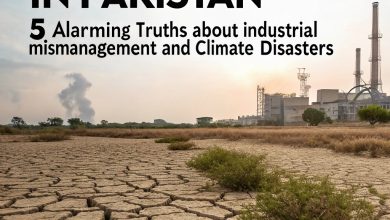Pakistan’s per-capita surface water to decrease to 860 cubic meters by 2025
Per capita availability of surface water is projected to decrease to 860 cubic meters in Pakistan by the year 2025.
According to data available with WealthPK, the availability of surface water for per capita consumption has been consistently declining in Pakistan since its creation. In 1951, the amount of surface water that was available for per capita consumption equaled 5,260 cubic meters. The level of water dropped to 1,000 cubic meters per capita by the year 2016. Now, as the threat of climate change increases in its potency with every passing year, and as the rate of population increase is not showing any signs of slowing down, per capita availability of water is going to further pass into stressed levels.
If climate-related disasters are not taken care of and if Pakistan continues to go down the path of current population growth levels, it is estimated that Pakistan will suffer losses amounting to 18%-20% of its GDP by the year 2050.
The total investment required to mitigate the risks posed by climate change amounts to $348 billion from 2023 to 2030. Similarly, as a party to the Paris Agreement of the United Nations Framework Convention on Climate Change (UNFCCC), Pakistan is obliged to submit Nationally Determined Contributions in order to join the global effort to shift towards a green and sustainable future.
The estimated cost of fully implementing the new projects and transitioning the existing projects towards green and sustainable methods of production will be $200 billion. Given that Pakistan continually faces revenue shortages, perennial problem of foreign exchange and obligations to service its debts, it will be very difficult for Pakistan to see through its international obligations as well as create necessary conditions for averting the dangers and threats of water shortage and climate change.Water shortages have increased the frequency of droughts.
Droughts then result in the loss of crops and livestock for agricultural households in the plains. Consequently, the threat of hunger, food insecurity, poverty, malnutrition in children, and decreased productivity start to loom large.
Additionally, those people who fall prey to disease, hunger, poverty, malnutrition and resulting disabilities become dependent on the state for their care. This puts extra burden on the coffers of the state to take charge of the unproductive agents of the economy. Reduction in agricultural productivity due to low water levels and unscheduled rains have already cost Pakistan $1.77 billion in the last two years as Pakistan had to import the requisite amount of wheat for domestic consumption.
Despite being an agrarian economy, Pakistan is still falling behind in fully assessing the gravity of the situation and adapting its productive methods and consumption behaviours to the evolving scenario. It is highly recommended that the government and the people of Pakistan undergo a serious session of introspection to assess how they are going to move forward into the future with such alarming prospects of water shortage and wheat losses.







